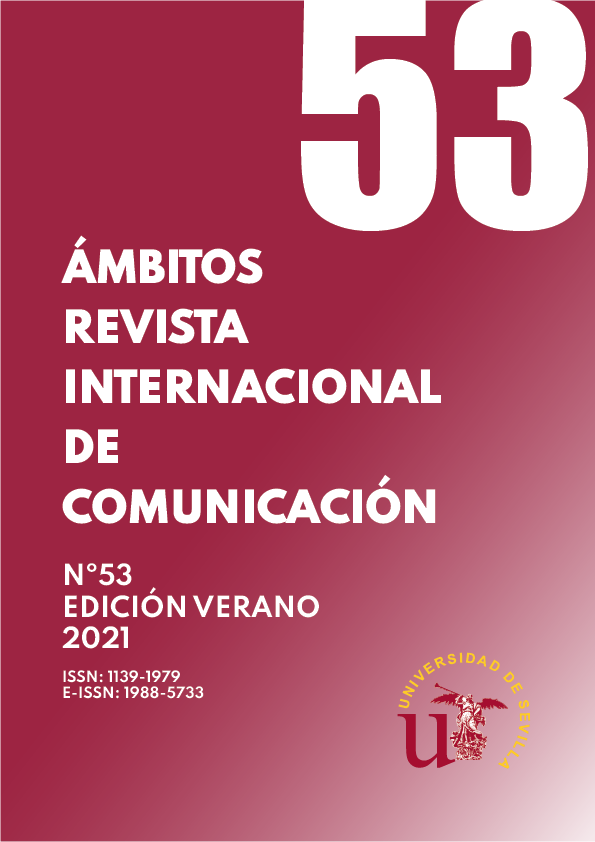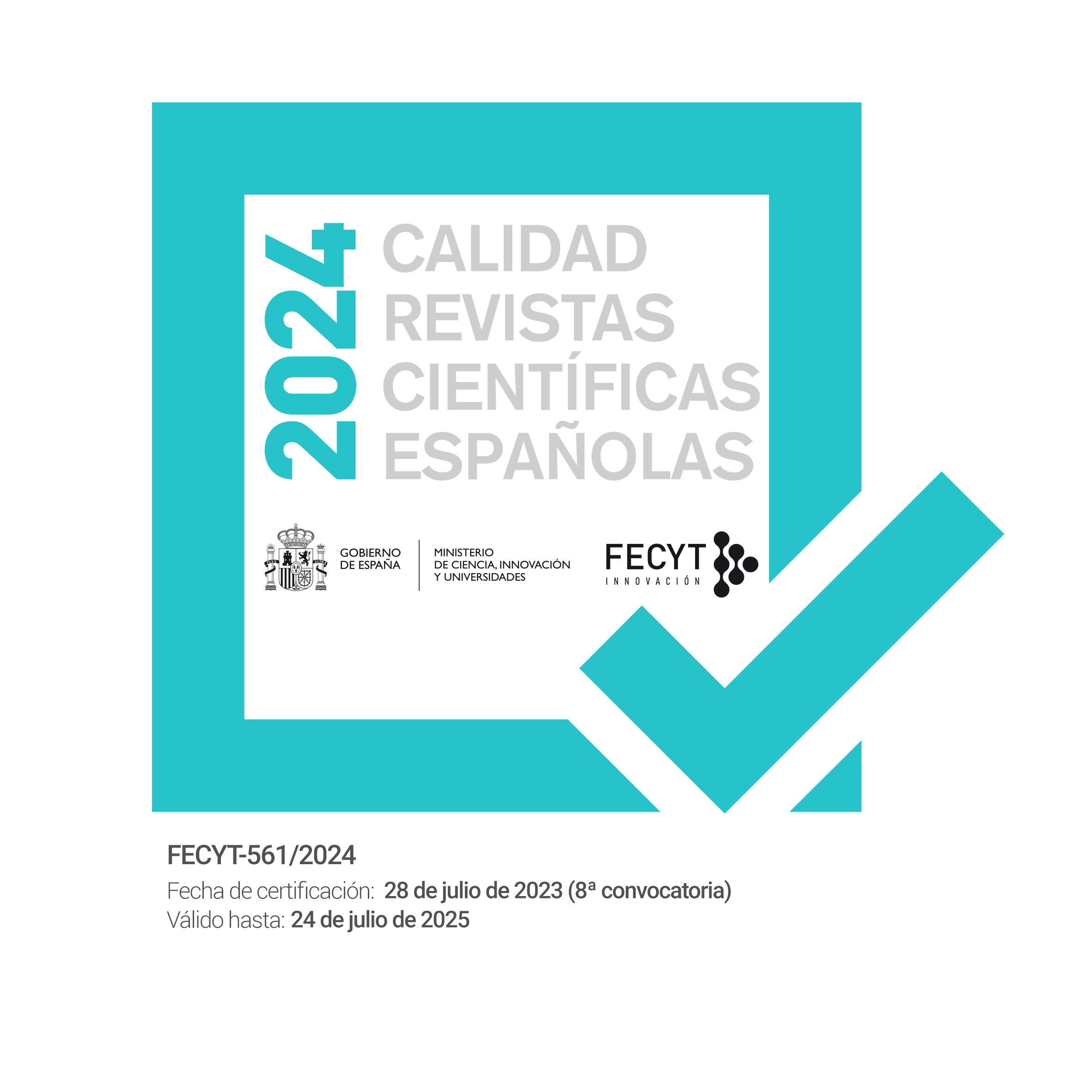Positive emotions and social marketing on NGDO Facebook pages
DOI:
https://doi.org/10.12795/Ambitos.2021.i53.10Keywords:
Social marketing, Happiness, NGOD, FacebookAbstract
There is great interest in the academic community in measuring positive emotions. In this sense, important literature emerges that explores these emotions in the volunteer environment of NGDOs. These entities use social networks to communicate with citizens. From this perspective, this article wants to examine the influence of positive emotions and social marketing in messages that talk about volunteering, from the information provided by the messages published in the ten most popular NGDOs on Facebook during the year 2019. A methodology based on data mining techniques and content analysis has been used. The results show that the number of likes is associated with the appearance of terms synonymous with happiness. From the point of view of social marketing, informative messages have achieved more impact than behavioral ones.
Downloads
References
Ahn, N. & Mochón, F. (2010). La felicidad de los españoles: factores explicativos. Revista de economía aplicada, 18(54), 5-31.
Andreasen A. (1994). Social Marketing: Its Definition and Domain. Journal of Public Policy & Marketing, 13(1), 108-114.
Arroyo, I.; Baños, M. & Rodríguez, T. (2012). Modelo de investigación de las piezas audiovisuales de las organizaciones del tercer sector en redes sociales. Tarragona, actas del congreso AE-IC, 1-18.
Ashtiani, A. Z.; Dudek, T. & Rieger, M. O. (2020). Happy savers and happy spenders: An experimental study comparing US Americans and Germans. Journal of Behavioral and Experimental Economics, 85, 101506. https://doi.org/10.1016/j.socec.2019.101506
Bakker, A.; Burger, M., van Haren, P., Oerlemans, W., & Veenhoven, R. (2020). Raise of Happiness Following Raised Awareness of How Happy One Feels: A Follow-Up of Repeated Users of the Happiness Indicator Website. International Journal of Applied Positive Psychology https://doi.org/10.1007/s41042-020-00032-w
Bernhardt, J.; Mays, D. & Hall, A. (2012). Social marketing at the right place and right time with new media. Journal of Social Marketing, 2(2), 130-137.
Binder, M.; & Freytag, A. (2013). Volunteering, subjective well-being and public policy. Journal of Economic Psychology, 34, 97-119. https://doi.org/10.1016/j.joep.2012.11.008
Borgonovi, F. (2008). Doing well by doing good. The relationship between formal volunteering and self-reported health and happiness. Social science & medicine, 66(11), 2321-2334. https://doi.org/10.1016/j.socscimed.2008.01.011.
Chumaceiro-Hernández, A.C.; Hernández- G.de Velazco, J.J.; Ravina-Ripoll, R. & Reyes-Hernández, I.V. (2020) University Social Responsibility in the Organizational Happiness Management. Utopia y Praxis Latinoamericana, 25(2), 427-440
Campbell, D. A. & Lambright, K. T. (2020). Terms of engagement: Facebook and twitter use among nonprofit human service organizations. Nonprofit Management and Leadership, 30(4), 545-568. doi:10.1002/nml.21403
Coordinadora de Ong para el Desarrollo España (CONGDE) (10 de julio de 2020). Nuestra historia. Recuperado de https://coordinadoraongd.org/coordinadora/historia-y-logros/.
Crespo, R. F. & Mesurado, B. (2015). Happiness economics, eudaimonia and positive psychology: From happiness economics to flourishing economics. Journal of Happiness Studies, 16(4), 931-946. https://doi.org/10.1007/s10902-014-9541-4
Dann S. (2010). Redefining social marketing with contermporary commercial marketing definitions. Journal of Business Research, 63, 147-153.
Díaz-Meneses, G. & Basil, MD (2019). A birief History of Social Marketinl. In Basil D.; Diaz-Meneses G. & Basil M. (Eds). Social Marketing in Action. Springer Texts in Business and Economics Social Marketing in Action (pp. 79-89). https://doi.org/10.1007/978-3-030-13020-6_5
Díaz-Pincheira, F. J. & Carrasco- Garcés, M. E. (2019). Effects of organizational climate and psychosocial risks on happiness at work. Contaduría y Administración, 63, 1- 14.http://dx.doi.org/10.22201/fca.24488410e.2018.1142
Ding, J.; Salinas-Jiménez, J. & Salinas-Jiménez, M. D. M. (2020). The Impact of Income Inequality on Subjective Well-Being: The Case of China. Journal of Happiness Studies, 1-22. https://doi.org/10.1007/s10902-020-00254-4
Dooley, J.; Jones, S. & Iverson, D. (2012). Web 2.0: an assessment of social marketing principles. Journal of Social Marketing, 2(3), 207-221.
Dominko, M. & Verbič, M. (2019). The economics of subjective well-being: A bibliometric analysis. Journal of Happiness Studies, 20(6), 19731994.https://doi.org/10.1007/s10902-018-0022-z
Easterlin, R. A. (2001). Income and happiness: Towards a unified theory. The Economic Journal, 111(473), 465-484. https://doi.org/10.1111/1468-0297.00646
Ekman, P. (2003). Emotions Revealed. Times Books.
Elías Zambrano, R. (2018). Digital advertising storytelling: consumer educommunication. IROCAMM - International Review of Communication and Marketing Mix, 1, 32-44. http://dx.doi.org/10.12795/IROCAMM.2018.i1.02
Fisher, C. D. (2010). Happiness at work. International Journal of Management Reviews, 12(4), 384–412. https://doi.org/10.1111/j.1468-2370.2009.00270.x.
Frey, B.S. (2020). What are the opportunities for future happiness research? International Review of Economics, 67, 5–12. https://doi.org/10.1007/s12232-019-00318-9
French J. & Blair-Stevens C. (2006). From snake oil salesmen to trusted policy advisors: the development of a strategic approach to the application of social marketing in England.Social Marketing Quarterly, 12(3), 29-40.
Fundación Luis Vives (2012). Uso de las redes sociales en las ONG españolas. https://www.telefonodelaesperanza.org/noticias/view/5462
Guidry, J.; Waters, R. & Saxton, G. (2014). Moving social marketing beyond personal change to social changeStrategically using Twitter to mobilizesupporters into vocal advocates. Journal of Social Marketing, 4(2), 40-260.
Hendriks, M., Burger, M., Rijsenbilt, A., Pleeging, E., & Commandeur, H. (2020). Virtuous leadership: a source of employee well-being and trust. Management Research Review. 43(8), 951-970. https://doi.org/10.1108/MRR-07-2019-0326
IAB Spain; Elogia (2019). Estudio Anual de Redes Sociales 2019. Recuperado de https://iabspain.es/estudio/estudio-anual-de-redes-sociales-2019/
Iranzo A. & Farné, A. (2014). Herramientas de Comunicación para el Tercer Sector: El uso de las Redes Sociales por las ONGD Catalanas. COMMONS - Revista de Comunicación y Ciudadanía Digital 3, (2), 29-50.
Jiménez-Marín, G.; Elías Zambrano, R.; Bellido-Pérez, E. & Sanz-Marcos, P. (2019). Eficacia del endorsement marketing: La comunicación de las empresas de retail a través de Instagram. En Sierra Sánchez, J. & Lavín de la Cavada, J. M. (eds.). Redes sociales, tecnologías digitales y narrativas interactivas en la sociedad de la información, 109-120. Madrid: McGraw-Hill.
Kent, M. & Taylor, M. (2002). Toward a dialogic theory of public relations. Public Relations Review, 28, 21-37.
Kotler, P. (2011). Reinventing marketing to manage the environmental imperative. Journal of Marketing, 75, 132-135.
Lee, N. R. & Kotler, P. (2020). Social marketing: behavior change for social good. California, USA: SAGE Publications.
Lee, M. A. (2019). Volunteering and happiness: Examining the differential effects of volunteering types according to household income. Journal of Happiness Studies, 20(3), 795-814. https://doi.org/10.1007/s10902-018-9968-0
Liu, Z.; Zhong, X.; Zhang, T. & Li, W. (2020). Household debt and happiness: evidence from the China Household Finance Survey. Applied Economics Letters, 27(3), 199-205. https://doi.org/10.1080/13504851.2019.1610706
Magnani, E. & Zhu, R. (2018). Does kindness lead to happiness? Voluntary activities and subjective well-being. Journal of behavioral and experimental economics, 77, 20-28. https://doi.org/10.1016/j.socec.2018.09.009
Maimon, O. & Rokach, L. (2010). Data Mining and Knowledge Discovery Handbook. Cham: Springer.
Mroueh, M. & De Waal, A. (2020), Measuring happiness at work in a Takaful organization, Journal of Organizational Effectiveness: People and Performance, https://doi.org/10.1108/JOEPP-04-2020-0050
Muñoz, I. (2015). El alcance mediático de los gabinetes de comunicación de las ONGD pro inmigrantes. Análisis de la campaña ¿Y tú de quién eres? De la fundación Sevilla Acoge en 2013. (tesis doctoral). Facultad de Comunicación. Universidad de Sevilla.
Plutchik, R. (2001). The Nature of Emotions: Human emotions have deep evolutionary roots, a fact that may explain their complexity and provide tools for clinical practice. American Scientist, 89(4), 344–350.
Ramil, X. (2012). ¿Cuál es el nuevo paradigma de la comunicación en el que nos movemos las ONG de Desarrollo? En Ramil, Xosé (coordinación): ParadigmáTIC@s, Comunicación y Cultura Digital en las ONGs de Desarrollo.
Ravina-Ripoll, R.; Tobar-Pesantez, L. & Galiano-Coronil, A. (2018). Claves para un desarrollo sostenible La creatividad y el happiness management como portafolio de la innovación tecnológica, empresarial y marketing social. Editorial Comares.
Rodríguez-Pose, A. & Von Berlepsch, V. (2014). Social capital and individual happiness in Europe. Journal of Happiness Studies, 15(2), 357-386.https://doi.org/10.1007/s10902-013-9426-y
Román-San-Miguel, A. & Díaz-Cruzado, J. (2019). Communication and advertising in NGDOs: Present and future. IROCAMM: International Review of Communication and Marketing Mix, 2 (1), 95-101. 10.12795/IROCAMM.2019.v02.i01.09
Saxton, G. & Guo, C. (2014). Tweeting Social Change: How Social Media AreChanging NonprofitAdvocacy. Nonprofit and Voluntary Sector Quarterly 2014, 43(1), 57-79.
Saxton, G. & Waters, R. (2014). What do Stakeholders Like on Facebook? Examining Public Reactions to Nonprofit Organizations’ Informational, Promotional, and Community-Building Messages. Journal of Public Relations Research, 6, 280-299.
Schwarze, J. & Winkelmann, R. (2011). Happiness and altruism within the extended family. Journal of Population Economics, 24 (3), 1033-1051. https://doi.org/10.1007/s00148-010-0326-8
Tanaka, S. & Tokimatsu, K. (2020). Social Capital, Subjective Well-Being, and Happiness: Evidence from a Survey in Various European and Asian Countries to Address the Stiglitz Report. Modern Economy, 11(02), 322.
Tinto, J. (2013). El análisis de contenido como herramienta de utilidad para la realización de una investigación descriptiva. Un ejemplo de aplicación práctica utilizado para conocer las investigaciones realizadas sobre la imagen de marca de España y el efecto país de origen. Provincia, 29, 135-173.
Downloads
Published
How to Cite
Issue
Section
License
Copyright (c) 2021 Araceli Galiano Coronil, Rafael Ravina Ripoll

This work is licensed under a Creative Commons Attribution-NonCommercial-ShareAlike 4.0 International License.
Ámbitos. Revista Internacional de Comunicación is an open access journal, which means that all content is freely available at no charge to the user or their institution. Users may read, download, copy, distribute, distribute, print, search or link to the full text of articles, or use them for any other lawful purpose, without seeking prior permission from the publisher or author. This definition of open access is in accordance with the Budapest Open Access Initiative (BOAI).

Unless otherwise noted, all content in the electronic edition is distributed under a "Creative Commons Attribution-NonCommercial-ShareAlike 4.0 International License". You can consult the informative version and legal text of the licence here. This should be expressly stated in this way where necessary.
In case of acceptance of the manuscript, the authors cede the rights of the work for its publication to Ámbitos. Revista Internacional de Comunicación under the Attribution-NonCommercial-ShareAlike 4.0 International license contract (CC BY-NC-SA 4.0). The authors retain copyright and third parties are authorised to copy, distribute and make use of the work, provided they comply with the terms and conditions set out in the licence
- Cite the authorship and the original source of publication (journal, publisher and URL of the work).
- Do not use them for commercial purposes.
- If you remix, transform or create from the material, you must release your contributions under the same license as the original.
More information can be found at https://creativecommons.org/licenses/by-nc-sa/4.0/deed.es


















